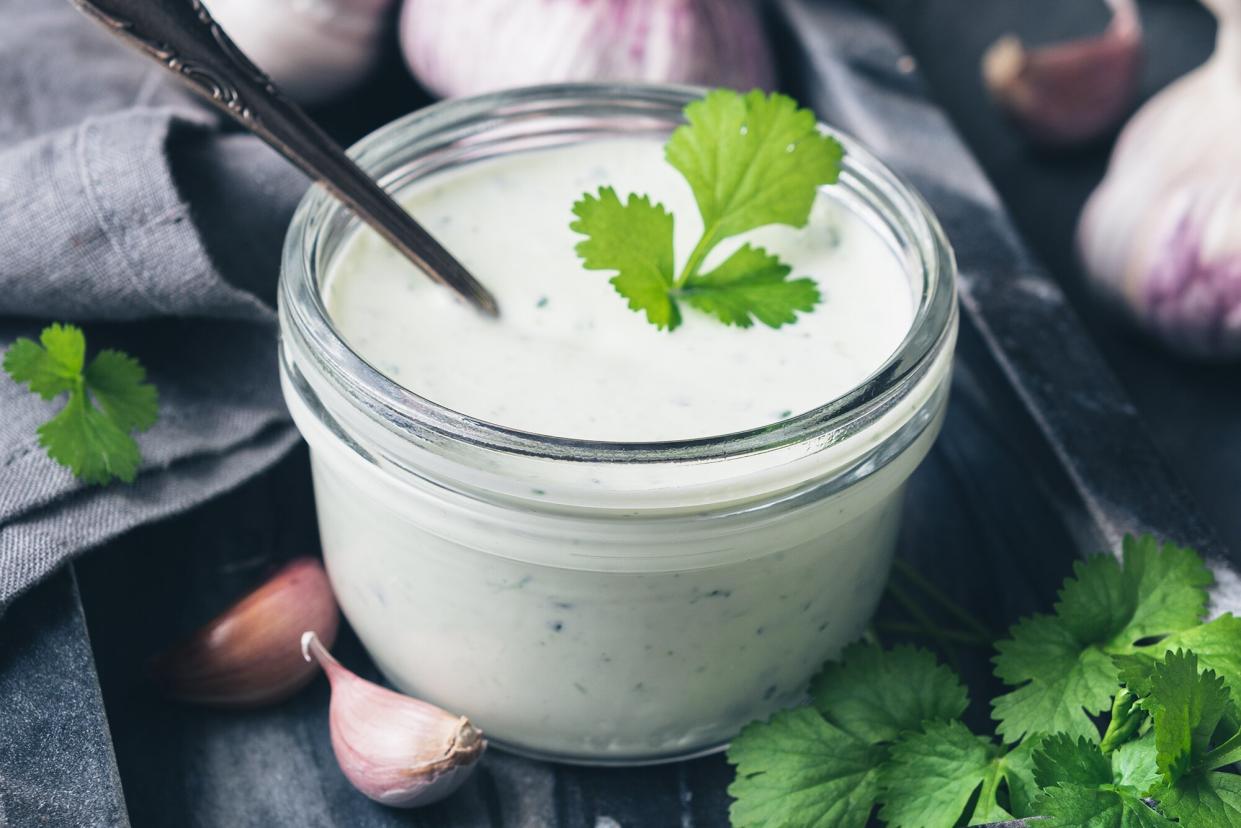I've Been Using This Restaurant Hack for Making Creamy Salad Dressings for Years

Getty Images
Growing up in the 1980s, it seemed there were only four types of store-bought salad dressings: Italian, French, Russian and Thousand Island. Even honey-mustard or Caesar salad dressings were a stretch for my parents, and the tidal wave of shelf-stable, creamy ranch dressings was just beginning to hit supermarket shelves in our corner of New Jersey. My father mixed dried packets of the stuff into hot sauce and melted butter to make his buffalo sauce for wings. Blue cheese dressing was strictly a hot wings condiment that only came out onto snack-tray tables during football Sundays. Italian dressing—with its multi-colored flecks of flavor floating in the murky part of the dressing that had separated from the oil—was my favorite. The only way to recombine it and make it anything close to creamy was to shake the bottle real hard, which was not a terribly successful technique. But turns out, I was onto something.
Related: The Best Immersion Blenders, According to Our Test Kitchen
Years later at my first restaurant job, I learned of the existence of the immersion blender, and I have never been without one since. At the salad station where I worked, we called it "the stick" or "the Dyno," a play on the brand name of the industrial immersion blender that was about the size of a five-year-old child. We plunged it into great vats of salad dressings, turning almost any type into a thick, satiny, creamy emulsion without having to use any dairy or mayonnaise, or whisking until our arms fell off. I still use this hack to this day. It's so easy, why wouldn't I! Plus, if you enjoy creamy textures like most of us do, it's an excellent technique for when you're avoiding dairy, have a lactose intolerance or simply do not enjoy adding gobs of mayonnaise to a salad dressing.
An immersion blender is like a turbo-charged version of shaking a bottle of dressing. Both techniques are trying to accomplish the same thing: emulsification. But using a powerful immersion blender is a much more efficient way of achieving that uniform, velvety consistency. Even a simple mix of balsamic vinegar, oil, garlic, salt and pepper is no challenge for the Dyno, turning a defiantly separated vinaigrette into a luscious dressing in a manner of seconds to minutes, depending on the size of the batch.
Once your dressing has been emulsified, it will remain so for at least as long as you have it on the dinner table. If it does separate, it's easy to stick the blender back in and recombine the mixture. To make your dressing extra stable, you can add an emulsifier like Dijon mustard or honey to helps support the creamy texture. And If you happen to have an immersion blender with a detachable base, clean-up is a breeze.
I recommend blending in a container that is somewhat narrow and has some height; the volume of dressing has to come above the blade or else the mixture may be difficult to emulsify. And you don't need an immersion blender the size of a kindergartener to make your dressings creamy. Any size will work, and smaller sizes may be better suited for home cooking. Try this technique the next time you're prepping a salad. It will likely become a permanent part of your tool kit.
Related: How to Make Perfect Homemade Vinaigrette Every Time

